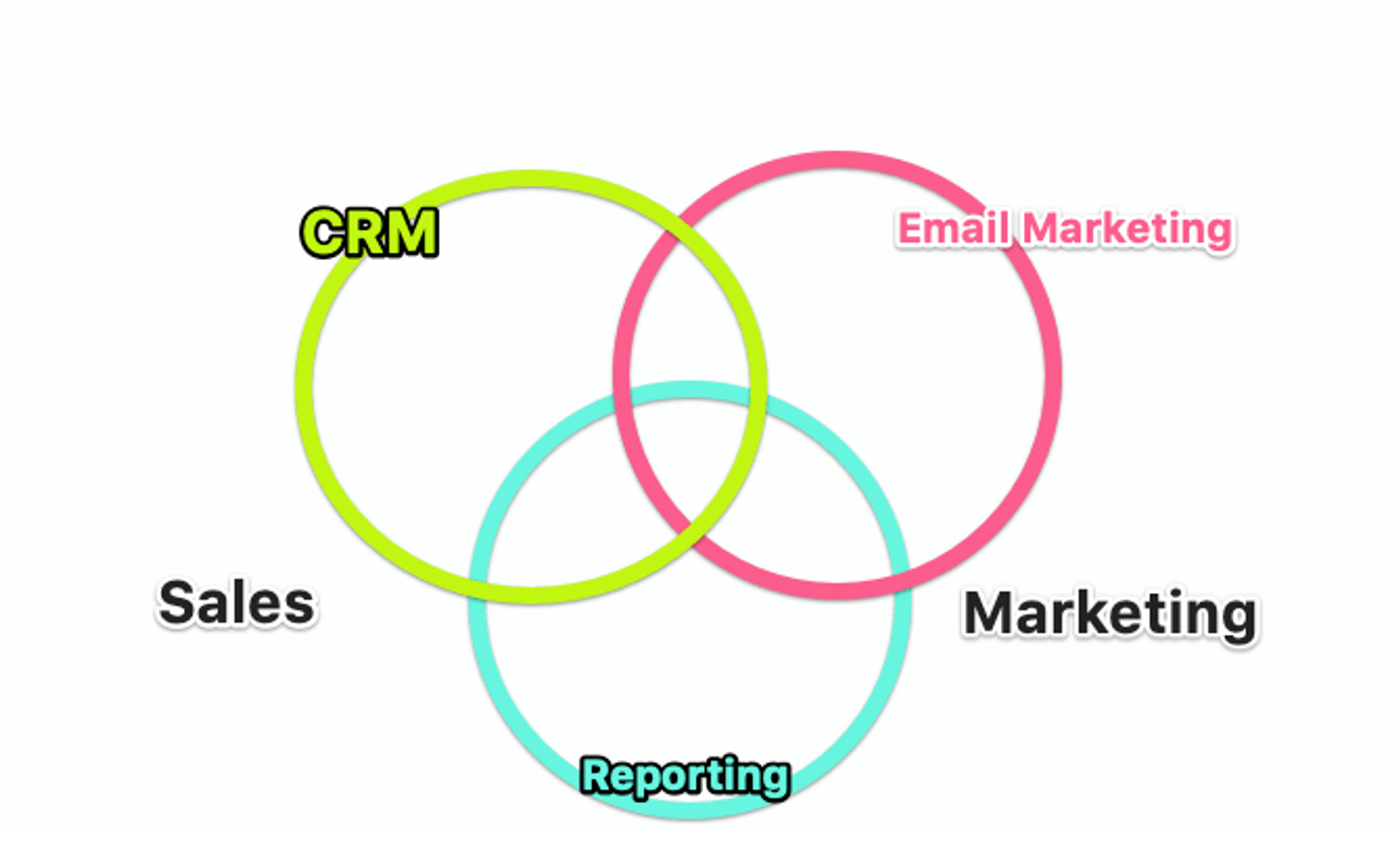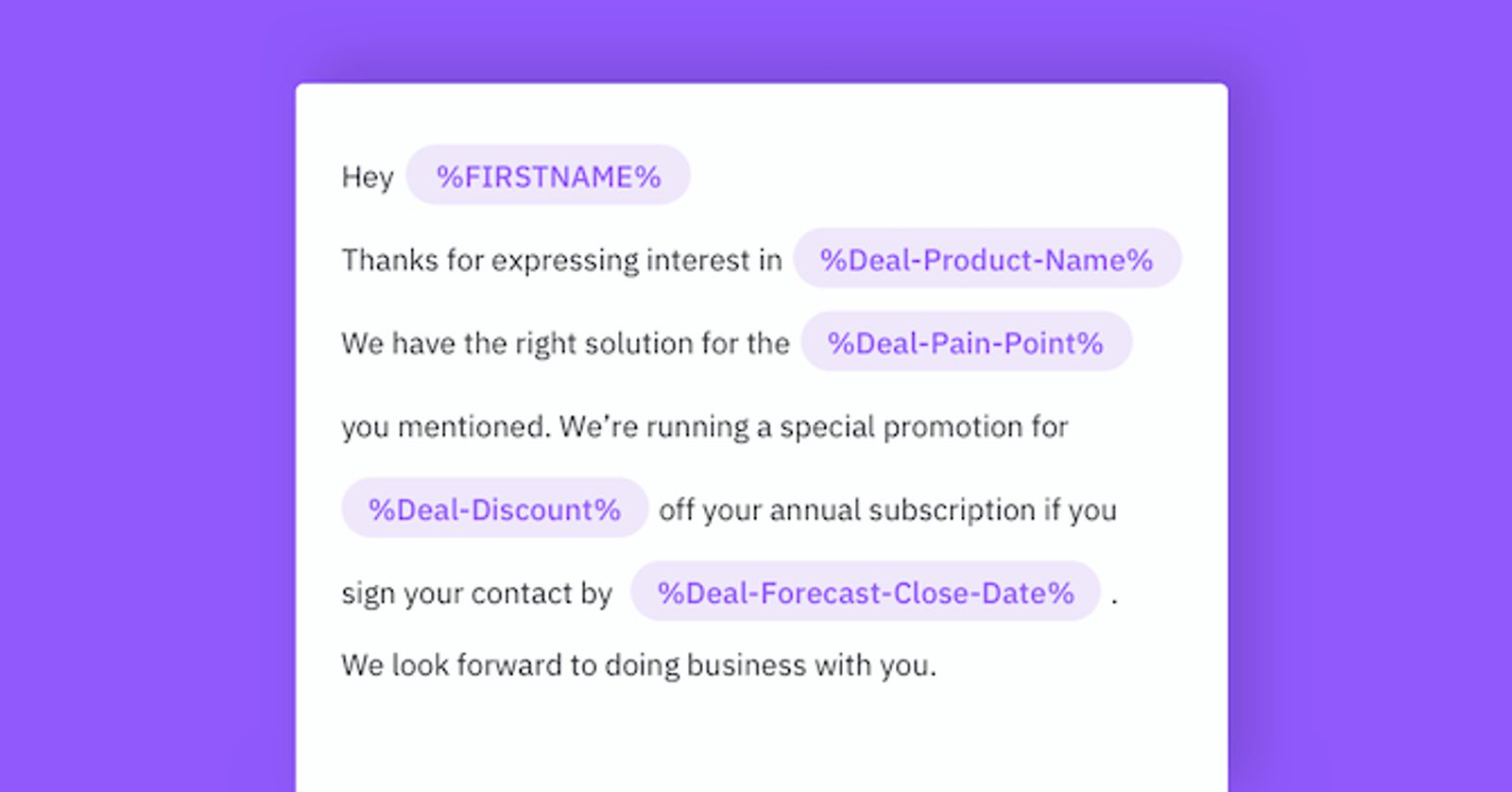On average it costs $1.13 for companies to earn $1 from a new customer.
I’m no mathematician (I barely passed calculus in college), but I’m pretty sure that $1.13 is more than $1.00. The average company is spending more than it’s making on customer acquisition.
How can you lower this cost?
Well, customer acquisition falls on marketing and sales. Marketing and sales depend on CRM to add customers. Your customer relationship manager (CRM) is the central database of customer and prospect information needed to close the sale and retain your customers.
CRM software is everywhere – and everyone says you “should” be using it.
But what does it actually do for you? How can you use your CRM to get more customers (in less time)? How can you optimize your CRM?
66% of companies are getting little to no benefit from their CRM information! It’s hard to close sales when you don’t know anything about who you’re selling to. It’s also hard to keep customers when you can’t remember who they are.
In this post we’ll cover 9 best practices to optimize your CRM.
- Audit your data regularly
- Create a uniform system for data entry
- Use data hygiene to get people to use your CRM
- Never let unclean data into your CRM
- Marry your marketing and sales data
- Refine and organize your contacts into segments
- Integrate your calendars and website
- Integrate your customer support tools
- Automate unnecessary manual processes
Data hygiene and organization best practices
To optimize your CRM, tackle the most important task first: your data. Let’s just get this out in the open:
Your CRM is less important than the data it holds.
The tool you choose, the sales integrations you hook it up to, the complicated lead scoring formulas you create, and all of the bells and whistles of your CRM is less important than the data your CRM holds.
In the fight to lower the cost of acquiring and keeping customers, bad data is public enemy #1. Take a look.
- Bad contact data can increase CAC by up to $11 per data record.
- Bad customer information costs most companies between 15%-25% of total revenue
- Knowledge workers spend around 50% of their time looking for or correcting bad customer info
- Nearly 60% of companies still don’t measure the actual financial cost of faulty data to their business
You might have the freshest, fanciest CRM on the block. But features and functionality mean nothing if your data is bad. So clean it up!
CRM best practice 1: Audit your data regularly (not as hard as it sounds)
Customer data decays at a rate of 30% – 70% per year.
About half of your customer information is bad – or will be bad in the next year.
Jobs change, lives change, businesses change, email addresses change, physical addresses change. Everything changes, all the time.
Keep up with the changes and keep your CRM optimized. Audit your data.
For a good data audit, follow this 7-step process and get your data right.
- Locate and gather all of your customer information
- Organize the information based on what you need to know
- Prioritize the customer information by value to your business
- Remove any duplicate or incorrect information
- Add any information that is missing
- Create a uniform system for data entry
- Repeat the audit process at least once a year
A thorough data audit saves you time and money in several departments.
- Marketing. Bad emails mean high bounce rates and lower sales. Good email lists improve your deliverability – and your campaigns will be able to sell more
- Sales. Bad info is a sales rep’s worst nightmare. Phone numbers that don’t work, outdated emails, outdated job titles. A clean CRM saves your reps from hunting down the info they need – so they can spend more time selling.

A clean database means your emails will always find their target.
Audit your data. Your marketing and sales teams will thank you.
CRM best practice 2: Create a uniform system for data entry
If everyone using the CRM is in charge of their own data entry methods, you’ll have a hard time finding anything that you’re looking for. Reporting will be difficult, if not impossible, and duplicate data will clog up your system.
Organization is your friend. Create clear guidelines for data entry.
Have a code for CRM processes like:
- Tracking phone calls
- Logging conversations
- Adding deal notes
- Setting appointments
- Scheduling calls
- Creating follow up tasks
How can you run a report on customer interactions when there are 15 different ways to indicate a conversation? How can you track customer information if everyone is adding it differently?
You can’t.
Guidelines for data entry gives you actual, actionable results. You will have clearer reports and insight into the areas your sales process can improve.

Make sure that your reports are accurate with uniform data.
Consistent customer information also helps you evaluate performance on an individual level. You can see where each rep is succeeding or underperforming.
Uniform data helps reveal big-picture trends in your sales process too!
- Average number of sales conversations needed for sale
- Common reasons for lost deals
- Length of sales cycle
- Average deal size
- Overall win rate
- Total pipeline value
Get more out of your data and improve your CRM return on investment (ROI).
Consistent data helps you lower your customer acquisition cost, and hang onto your customers for longer.
CRM best practice 3: Use data hygiene to get people to use your CRM
What if your team doesn’t use your CRM – even though it has all the features you technically need?
Why would people not use a tool that’s tailor-made for them?
- Lack of training
- Complexity and overkill
- Fear of corporate oversight
- Unclear value to reps
These problems are more common than you might think:
- 83% of executives say the biggest challenge is getting people to use the CRM
- 22% of reported problems with CRM are due to poor user adoption
- 40% of sales reps don’t even use their CRM and rely on more traditional tools
So how can you promote user adoption and data hygiene at the same time?
Turn it into a game.
James Wong, CEO of Avidian Technologies, says, “With CRM software, a good starting point is to have the team start entering their sales contacts. Once they have fully incorporated this process, start tracking sales with the new system.”
Start small. Make sure that the contacts and information they’re adding is consistent with your system.
When your users master the task at hand move them into the next level. Your CRM is being cleaned and your users are being trained at the same time.
“Continue adding new elements on a regular basis until they are using every function of the new solution in their daily routine."
CRM best practice 4: Never let unclean data into your CRM
Never let data into your CRM system without cleaning it. Otherwise it will pile up and you’ll have a mountain of bad data on your hands.
Data pollution occurs when:
- Integrations are faulty or misconfigured
- Humans make errors
- Data is changed within a business process
Identify the source of the data pollution and systemically correct it. Put on your detective hat and follow the faulty intel.
- If the source is an integration, you’ll have to play with the configuration until the data is transferring correctly.
- If it’s human error, best practice #2 (create a uniform system for data entry) and #3 (use data hygiene to promote user adoption).
- If a business process is the culprit, you may need to simplify or break it down into smaller pieces.
Optimized customer data = optimized CRM.
Marketing information best practices
In our information-driven world, you begin to learn about a sales prospect or lead from the moment they become aware of your business:
- Social media ad impressions
- Engagements
- An intro conversation at an event
- Site tracking information
This is marketing data. It can tell you a lot about a potential customer:
- Product/service interests
- Content they have interacted with
- Level of engagement

Marketing data comes from many different sources. Use it.
CRM best practice 5: Marry your marketing and sales data
What can you know about a lead before you ever make contact with them? More than you might think.
If you’re taking advantage of the available tools, you can answer most of these questions:
- How did they find out about you?
- What channel did they come from?
- Are they on your email list?
- Are they engaging with your content?
- What are they interested in?
The sales process begins with marketing.Studies show that 88% of your prospective customers have started to judge your business before you ever talk to them.
Today, there are multiple types of CRM for you to choose from. With stackable SaaS applications on the rise with no end in sight, your CRM and your marketing platform can be tied together via integration.

OR get you a platform that does both *cough* ActiveCampaign *cough*
These integrations make it simple for you to sync the information coming in from marketing.
Armed with this marketing information, you can manage the handoff from marketing → sales more effectively – because you have a better understanding of what each lead needs.
First contact sales calls are tricky. Contextual knowledge of a prospect is a huge advantage for you. Getting your marketing data in the CRM means the sales team has less tedious work to do. The qualifying process is already underway.
Not only will they have preliminary information ironed out for them, but marketing data tells them which leads to prioritize. Not all leads are created equal. Help your sales team know who to contact early and often.
When marketing data is tied into your CRM, you know more about:
- The problems that people are looking for your business to solve
- Where your potential customers are looking for answers
- The types of content that resonate best with your audience
- When to reach out to prospects
An optimized CRM contains all the necessary information to acquire and keep a customer. Marketing data gives your team a better sense of how to sell to each lead.
CRM best practice 6: Refine and organize your contacts into segments
A few weeks ago, before the final season of Game of Thrones began, I was on Quora reading some fan theories on how the show would end (I’m cool, I swear). The theories were all wrong, but that’s not the point.
A day later, I got an email from Quora with a Game of Thrones theory subject line. I opened it and I clicked.
The next day I got another. And another. And another.
Warning: Spoilers ahead!

See? I told you. I get one every day!
All of the emails are about Game of Thrones because I’ve apparently been tagged as “Game of Thrones enthusiast”.
Quora is tracking my actions and my behavior, and rewarding my engagement with more content aligned with what they know I am interested in. In this case, it’s Game of Thrones.
You can (and should) do the same in your CRM.
When you learn something about your prospective customers, that information is in your CRM because you’ve married your marketing and sales data (practice #5). You can use that information to segment or drill into your list to find a particular group of people.
The jargon changes from platform to platform but there are 3 main types of segmentation:
- Lists
- Tags
- Custom fields

The types of segmentation narrow down your contact list.
A list is a broad form of segmentation. Lists are based around a common interest or attribute that all contacts share.
Common uses of a list are:
- Customer list vs. prospective customer list
- Leads that came in from a Facebook ad campaign
- Students enrolled in your upcoming online course
- Prospects looking to buy a house in June
A tag is a way to segment by something that’s not permanent. Tagging is a form of ‘targeted’ segmentation and a great way to quickly organize your contacts on the fly. Tags refine your contacts from broad groups (lists) to smaller, more particular groups. You might use a tag to denote a contact’s
- Lead source – where did this contact come from? An ad campaign? Blog traffic? And event?
- Status – Customer or prospect? Engaged or non-engaged? Prospect or lead?
- Interest – if you offer multiple products or services, tagging is a great way to indicate what a contact is interested in or engaging with. For me and Quora, I’ll bet my tag = Game of Thrones
- Action – use an action tag to mark when a contact downloads content, signs up for an event, views a certain webpage multiple times, or takes a survey
A custom field is the most targeted form of segmentation as it indicates a highly personalized piece of information unique to each contact. Custom fields are the individual data points that make up a contact’s CRM information. Examples of custom fields are
- Phone number
- Events attended
- IP Address
- Webinars registered
- Previous partner
- Height
- Membership start date
- Favorite season
- Right handed or left handed
- Shoe size
- Number of tattoos
Custom fields let you use personalization tags to create email messages that feel handmade.

Automation with the right amount of personalization is the key.
It might be unclear whether to use tags or custom fields for a certain situation.
A good thing to remember is that tags are the most ‘temporary’ form of segmentation. Tags represent information about a prospect right now that is likely to shift over time.
A custom field is like a gene that’s been pulled from your contact’s DNA. It’s a tiny point of information, but in most cases it will be a permanent quality.
I posed some questions earlier in best practice #5:
- How did they find out about you?
- What channel did they come from?
- Are they on your email list?
- Are they engaging with your content?
- What are they interested in?
Each of these questions can use a segmentation feature to indicate the answer.
- A survey linked to a custom field indicates how they found you
- A tag shows a contact’s lead source
- Use a separate list for your email subscribers
- An ‘engaged’ tag shows who is taking action on your content
- A custom field or tag might be used to show a contact’s interests and if they change over time
Segmentation simplifies the lead-routing process. Your lead’s interests give you the information you need to send them to the best person to close the deal.
Integrate your other data sources
What are your sources of customer information?
- Social media activity
- Website tracking
- Calendar appointments
- Customer service tickets
- Email marketing
- Gated content downloads
- Form submissions
- Point of sale data
- Membership actions
Today, data is tied to almost everything we do online. Customer information is gathered at every touchpoint and stored within an individual tool or platform.
But isolated information silos don’t tell the whole customer story – only a chapter of it.
You shouldn’t have to piece fragments of information together from multiple sources every time you need to know more about a contact. That’s tedious, frustrating, and likely to result in a mistake or two. You’re only human, after all.

It’s like putting a puzzle together when you don’t know what the finished product should look like.
But you don’t have to put a puzzle together every time. You can link your tools to your CRM and see the complete picture in one central database.
That’s what your CRM is in the end: the single source of truth for all things customer-related. CRM integrations aggregate your sources of customer data into a single location.
The benefits are twofold:
- You can see the whole picture right away. No time wasting, no manual data tracking, and no guesswork.
- Your customers have a more positive experience. They won’t have to repeat themselves, they will feel attended to and cared about.
An optimized CRM tells you the whole story, piecing together information from all of your different touchpoints.
CRM best practice 7: Integrate your calendars and website
CRM optimization is about improving conversion rates through sales enablement. To help your sales team convert leads into customers, you have to put them in a position to make that possible.
How?
Emphasize “speed-to-contact” and empower your sales team with integrated calendars and website data.
As soon as a lead is created, you’re on the clock. Ready? GO!
Speed-to-contact is the time it takes from when a prospective customer becomes a lead to when they are contacted by sales. And it’s a big deal:
- 75% of prospects do business with the company that contacts them first
- Lead qualification odds decreases by 80% when you wait longer than 5 minutes
- Contacting a lead within a minute improves conversion rate by 391% – compare this with only a 17% improvement when waiting a day to reach out
Integrate your calendars with your CRM and give your sales team the ability to schedule calls with prospects (and the visibility to see which prospects are in contact with your team).
Integrate your website data with your CRM so you can
- Be notified when a lead takes action
- Tie the site tracking data to a lead scoring system and assign an engagement score to each contact.
Website and calendar integrations pull and display valuable customer information so you can know exactly when a contact:
- Books an appointment
- Downloads a whitepaper or fact sheet
- Reaches a high level of engagement
- Signs up for an event
Then, knowing how important speed-to-contact is, reach out to them immediately. You will improve conversion rates, reduce sales cycle time, impress your leads, and lower your customer acquisition cost.

The clock is ticking. What are you waiting for?!
CRM best practice 8: Integrate your customer support tools
Have you ever had an issue with a service or a product and called the customer service line – only to repeat your issue to 3 automated menus and 2 individuals before someone was able to help you?
Customer service and support are critical for customer retention:
- 97% of customers say it’s an important factor for brand loyalty
- 72% of consumers view repeating their issue as poor customer service
- 56% of people have stopped doing business with a company because of poor customer service
Beyond that, the two most satisfying aspects of a positive customer service experience are
- Not having to repeat themselves or be passed around
- Problem resolution on first contact
Customer support is key to retaining customers. And a 5% increase in customer retention leads to more than a 25% increase in profit.
Integrating your customer support tools with your CRM is a great way to reduce the risk of bad customer service.
A support rep can pull up a customer file and see everything they need about the current issue and any past problems they have faced. Your team will be faster, more effective, and more likely to find patterns or trends with issues or problems.
Automate where you can
Automation lets you save time and improve CRM health by removing the burden of manual tasks.
From data entry to email nurturing, task creation to internal notifications – not only does automation take care of it, but you won’t have to worry about human error.
You can experience profits in business and in emotion as you’ll be less stressed trying to keep everything straight.
Automate where you can.
CRM best practice 9: Automate unnecessary manual processes
The average CRM user spends about 5.5 hours per week logging activities.
That’s over 10% of their work week! That leads to costs in excess of $13,200 – in time alone!
Factor in the tendency for human errors and the cost of bad data and you’ve got a serious problem.
Reduce the negative effects of manual processes and automate where you can. The benefits compound down the line:
- Remove the possibility of human error
- Accurate data = accurate forecasting, finding trends and patterns, seeing shortcomings
- Accurate forecasting = better informed decision making

Automated data entry impacts other processes down the line
Automating data entry removes frustration from your end users and further encourages user adoption and CRM use.
With ActiveCampaign, you can automate many of your manual CRM processes – some examples are:
- Create or update a deal
- Add a deal to a certain pipeline
- Auto-creation of tasks
- Send content when a contact’s status changes
- Automated reminders
- Change status based on lead score
- Automated lead rotation
Get more out of your data and harness automation to improve your insight. Use automated internal notifications to receive updates when a:
- Deal is won
- Deal is lost
- Contact books an appointment
- Form is submitted
- Contact’s status changes
Use automation in your fight against bad data. Schedule a quarterly clean-up based on contact engagement.
Don’t let anything fall through the cracks! Automated tasks and reminders will require you (or your sales reps) to contact everyone who fits the parameters you have set. Auto-creation of follow up tasks ensure that each lead who needs to be contacted is contacted.
Integrate. Automate. Optimize.
Conclusion: Is your CRM optimized?
Your CRM exists to help you effectively manage your customer relationships.
These 9 best practices for CRM optimization will improve your ability to do that. You’ll get more out of your data, reduce the cost of your customer acquisition, and hold onto your customers for longer.
Narrow your focus to these 4 key areas and improve your CRM ROI:
- Data hygiene and organization
- Use your marketing data
- Integrate your other data sources
- Automate where you can









